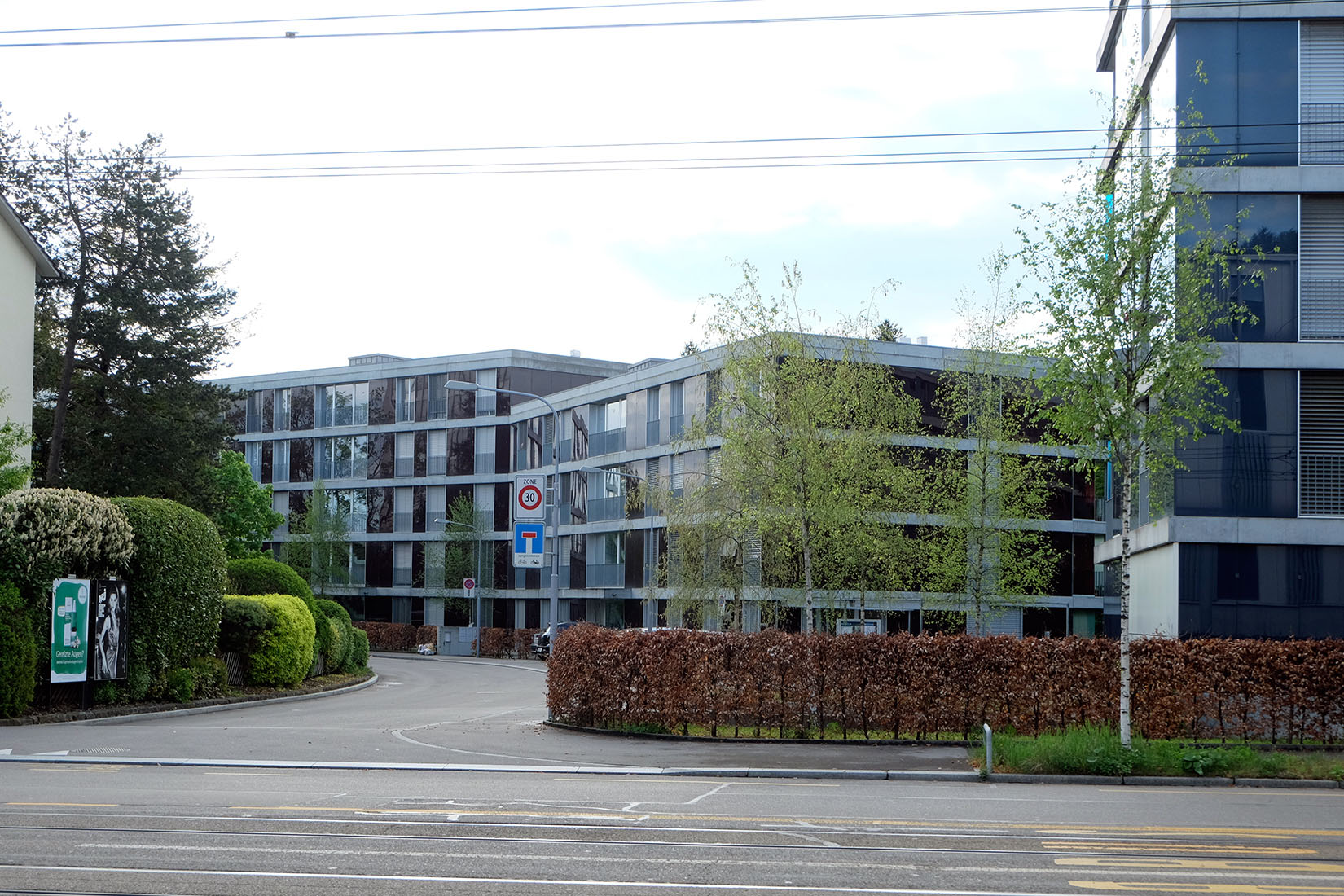 |
 |
 |
 |

Apartmentbuildings Brunnenhof - Zurich
Hofwiesenstrasse 140 - 158 / Brunnenhofstrasse 6 - 14
2003 - 2007
For the noise-affected building on Hofwiesenstrasse, access to the apartments is via longitudinally arranged staircases and spacious entryways that adjoin the eat-in kitchens. All bedrooms face the quiet park side and are connected by a projecting balcony. The living rooms extend through the apartment, facing both east and west and giving onto the park-side balconies.
Within the smaller Brunnenhofstrasse building, the living rooms are positioned along the façade and look onto the park to the south and southeast via adjoining balcony areas. In the four-story north- and south-facing part of the building, the eat-in kitchens are connected to the living rooms on the south side, while in the angled part of the building the kitchens enjoy the evening sun.
A circuit-like layout grants all apartment types spaciousness, freedom of movement for both children and adults, and enhanced flexibility of use. The latter is further augmented in the ground floor apartments by means of extra rooms between them that can be used by either apartment. The entrance lobbies on the ground floor are connecting rooms that link to the park and provide space for strollers, scooters, and toys. The naturally lit laundry and drying rooms are located in the basement, adjacent to the stairs.
A kindergarten and nursery are housed at the end of both buildings where the pathway to the park is situated. A multi-purpose common room takes the most prominent position at the corner between street and pathway. A continuous hedge along the street creates a green zone that provides the necessary privacy for the slightly elevated ground floor apartments. The park-facing apartments are elevated by half a story to allow the inclusion of a garden and play area between the park and the building. The hedges that run alongside the building approaches establish the border between these zones and the park.
The façades are formed by the balconies and the concrete bands that wrap horizontally around the building. Between them, floor-to-ceiling windows alternate with colored glass panels, joining together with sliding glass shades to create an interplay of reflecting and matt, opaque and translucent or transparent surfaces. The color concept was developed together with the artist Adrian Schiess. Facing the street, the glazing is dark blue and violet, while toward the park the tonality flows over large areas from blue tones to orange to yellow. The impression of the fluid, changing play of colors is enhanced by the varying positions of the sliding elements – ultimately the residents modify and create new color compositions every day, even every hour.
(Text: Gigon Guyer)
Die Solitärbauten der Stiftung für kinderreiche Familien aus den 1930er Jahren wurden durch zwei langgezogene, geknickte Baukörper ersetzt, welche den Strassenverläufen folgen und dabei die nordwestliche, städtische Parkanlage rahmen.
Die Wohnungsgrundrisse der beiden Bauten reagieren auf die unterschiedlichen Orientierungen und Lärmbelastungen der Strassen. Trotzt differenzierten Gebäudetiefen gewähren alle Wohnungstypen einen Rundlauf, räumliche Grosszügigkeit sowie erhöhte Nutzungsflexibilität.
An den Fassaden zeichnen sich die Geschossebenen der 4- bis 6-geschossigen Bauten ab: Zum Park hin mit durchgehenden Balkonen und mit gliedernden Betonelementen gegen die Strasse. Farbige Glaspaneele bilden sowohl opake Fassadenverkleidungen als auch verschiebbare Sonnen- und Sichtschutzpaneele aus transparenten und transluszenten Gläsern. Die Farbtöne wurden in Zusammenarbeit mit dem Künstler Adrian Schiess gewählt - zur Strasse hin dunkelblau und violett, zum Park hin als schillernder Farbverlauf von gelb über orange zu blau.
(Text: Gigon Guyer)
